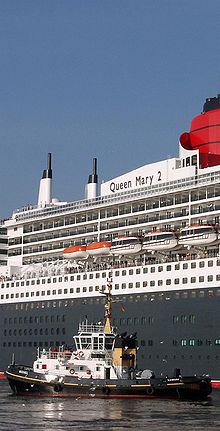Province of A Coruña
A Coruña | |
|---|---|
 Location of the Province of A Coruña within Spain | |
| Coordinates:43°22′17″N8°23′46″W/ 43.37135°N 8.396°W | |
| Country | |
| Autonomous community | |
| Capital | A Coruña |
| Government | |
| • Body | Deputación da Coruña |
| • President of the Deputación | Valentín González Formoso (PSdeG) |
| Area | |
| • Total | 7,950 km2(3,070 sq mi) |
| • Rank | 32nd |
| Population (2018)[1] | |
| • Total | 1,121,484 |
| • Rank | 10th |
| • Density | 140/km2(370/sq mi) |
| Demonyms | Coruñés (m), Coruñesa (f) |
| Postal code | 15--- |
| ISO 3166 code | ES-C |
| Parliament | 24 deputies (out of 75) |
| Congress | 9 deputies (out of 350) |
| Senate | 4 senators (out of 264) |
| Website | www |
Theprovince of A Coruña(Galician:provincia da Coruña[pɾoˈβinθjɐðɐkoˈɾuɲɐ];Spanish:provincia de La Coruña[lakoˈɾuɲa];historical English:Corunna)[2]is the northwesternmost province ofSpain,and one of the four provinces which constitute theautonomous communityofGalicia.This province is surrounded by theAtlantic Oceanto the west and north,Pontevedra Provinceto the south andLugo Provinceto the east.
History
[edit]
The history of this province starts at the end of theMiddle Agesduring the reign of theCatholic Monarchs of Spain.During those years this province was far smaller than today. This is because in the1833 territorial division of Spainthe entireProvince of Betanzostogether with half of theMondoñedowere amalgamated into one single province with its capitalcity in A Coruña. Since 1833, the province has always been the one with the largest population and largest coast. Until the second half of the 20th century, this province was both the religious and cultural centre of the entire region. TheUniversity of Santiago de Compostelawas the only university in North-western Spain until the arrival of democracy after the death of GeneralFrancisco Franco.
Population
[edit]| A Coruña ProvincePopulation c. 1787 | |||
|---|---|---|---|
| District | population | ||
| City of A Coruña | 13,575 | ||
| City of Ferrol(Civilian Pop. Only) | 24,993 | ||
| Santiago de Compostela | 15,584 | ||
| Towns, villages and hamlets | c.229,123 | ||
| All the Province (Total): | 283,275 | ||
| (Ferrol - Urban History,2004)[1] | |||
| A Coruña ProvincePopulation c. 1833 | |||
|---|---|---|---|
| District | population | ||
| City of A Coruña | 23,000 | ||
| City of Ferrol(Civilian Pop. Only) | 13,000 | ||
| Santiago de Compostela | 28,000 | ||
| Towns, villages and hamlets | c.233,000 | ||
| All the Province (Total): | c.297,000 | ||
| (U. P. Gazetteer By Th.Baldwin,1847)[2] | |||
| A Coruña ProvincePopulation c. 1900 | |||
|---|---|---|---|
| District | population | ||
| City of A Coruña | 43,971 | ||
| City of Ferrol(Civilian Pop. Only) | 25,281 | ||
| Santiago de Compostela | 24,120 | ||
| Towns, villages and hamlets | 580,184 | ||
| All the Province (Total): | 653,556 | ||
| (Encyclopædia Britannica,1911)s:User:Tim Starling/ScanSet PNG demo | |||
Since 1877
[edit]
Main sights
[edit]Thecathedral of Santiago de Compostelais the destination of theWay of St. James,a major historicalpilgrimageroute since theMiddle Ageswhich still gathers thousands of pilgrims each year from all over the world.
Parks
[edit]- Atlantic Islands of Galicia National Park[3]is the onlynational parkin Galicia. It is shared between the Provinces of A Coruña andPontevedra.
- The "Fragas" of the River Eume Natural Parkextends itself throughout theEumeandFerrolregions ofFerrolterra.
- The Dunes of Corrubedo Natural Park(Parque Natural das Dunas de Corrubedo e lagoas de Carregal e Vixán) is a beach park at the very end of theBarbanza Peninsula.
Transport
[edit]Airports and airfields
[edit]- Aeroporto da Lavacollain Santiago de Compostela
- Aeroporto de Alvedroin the City of A Coruña
- Heliporto da Grañain the Naval Base ofA Graña(Ferrolterra)
- Heliporto de NaróninNaron(Ferrolterra)
Railway
[edit]- Spanish National Railway NetworkLinking every major city: Ferrol,Betanzos,A Coruña and Santiago de Compostela
- Spanish Narrow-Gauge RailwaysLinking the City of Ferrol with different towns of Ferrol andOrtegal.This line is also known as Ferrol-Irun(Basque Country)
- Spanish High Speed Railway Network(AVE) Linking most major cities of the province withLisbonandMadridis under construction.
Economy
[edit]Ports
[edit]- A Coruña–Major Commercial Port– Rías Altas
- Malpica–Fishing Port– Costa da Morte
- Camariñas–Fishing Port– Costa da Morte
- Fisterra–Fishing Port– Costa da Morte
- Ferrol–Major Commercial Ports(also:Military) –Rias altas
- Cariño–Fishing Port– Rias altas
- Espasante–Fishing Port– Rias altas
- Cedeira–Fishing Port– Rias altas
Sport
[edit]- Deportivo de La CoruñaSpanishPrimera Federaciónteam from the City of A Coruña.
- Racing FerrolSpanishSegunda Divisiónteam from the City of Ferrol.
- SD CompostelaSpanishSegunda Federaciónteam from the City of Santiago de Compostela.
- Atlético ArteixoSpanishTercera Federaciónteam from theMunicipality of Arteixo.
- Bergantiños FCSpanishTercera Federaciónteam from theMunicipality of Carballo.
- SD NegreiraSpanish Tercera Division team from theMunicipality of Negreira.
- Autos Lobelle de Santiago FSSpanishDivisión de Honorof Futsal team from the City of Santiago de Compostela.
See also
[edit]References
[edit]- ^Municipal Register of Spain 2018.National Statistics Institute.
- ^Chisholm, Hugh,ed. (1911)..Encyclopædia Britannica.Vol. 7 (11th ed.). Cambridge University Press. p. 208.
- ^Atlantic Islands of Galicia National Park(in Spanish).Archived27 January 2007 at theWayback Machine.

